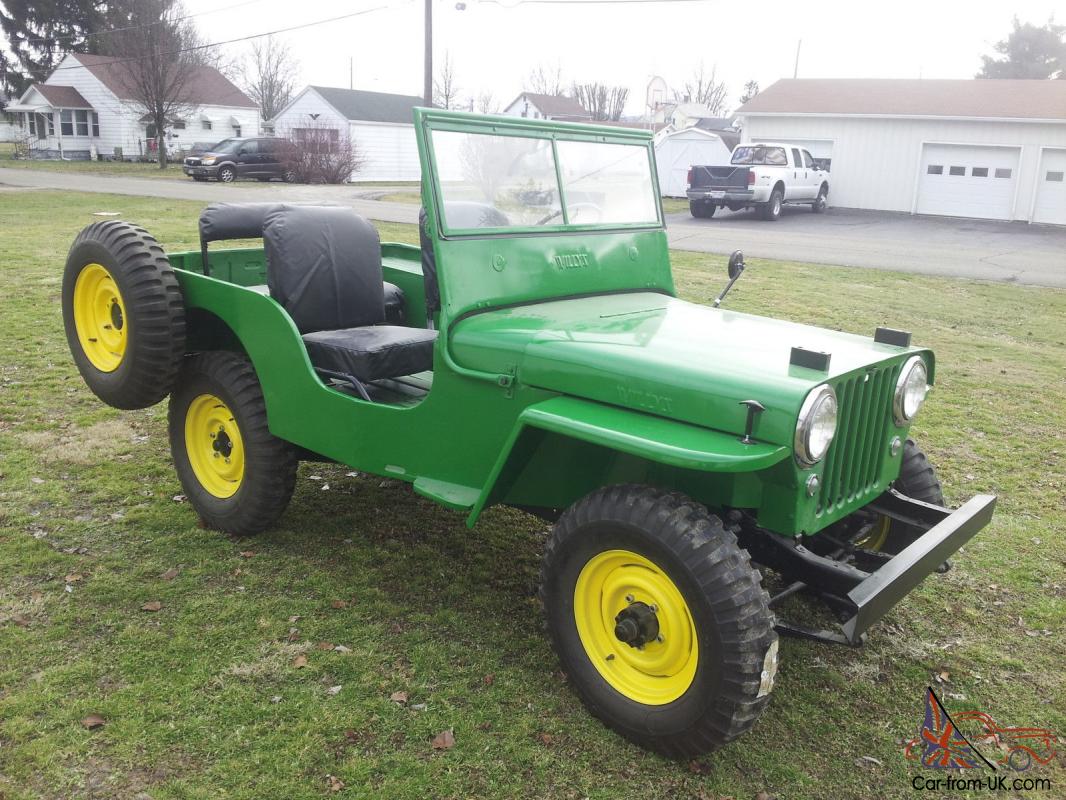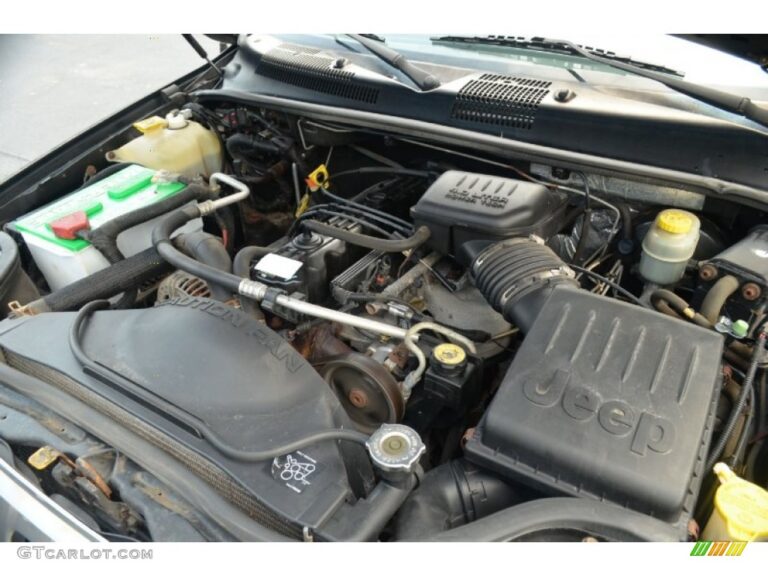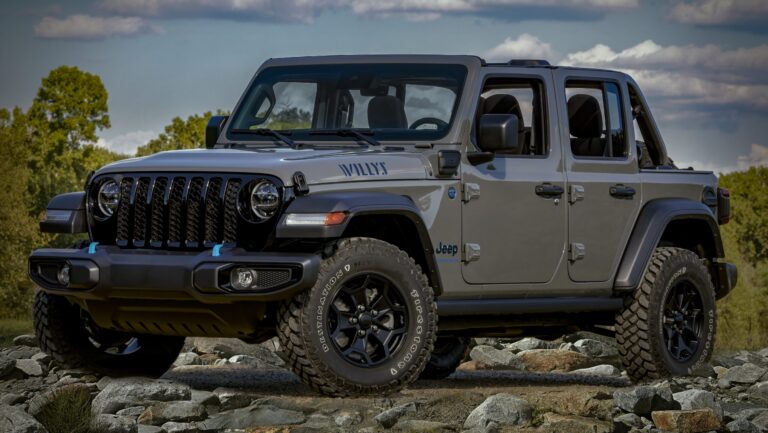1946 Willys Jeep For Sale: Your Guide to Owning a Piece of American History
1946 Willys Jeep For Sale: Your Guide to Owning a Piece of American History jeeps.truckstrend.com
The year 1946 marked a pivotal moment for a vehicle that had already achieved legendary status on the battlefields of World War II. As soldiers returned home, so too did the iconic "Jeep," transitioning from a military workhorse to a civilian marvel. The 1946 Willys CJ-2A, the first truly mass-produced civilian Jeep, embodies this transformation, offering a rugged simplicity and an undeniable connection to a bygone era. For enthusiasts, collectors, and anyone seeking a unique piece of automotive history, a "1946 Willys Jeep for sale" isn’t just a transaction; it’s an invitation to own a legend. This comprehensive guide will navigate the nuances of finding, evaluating, and owning one of these remarkable vehicles.
A Legacy Forged in Steel: Understanding the 1946 Willys CJ-2A
1946 Willys Jeep For Sale: Your Guide to Owning a Piece of American History
Born from the wartime success of the MB and Ford GPW, the Willys CJ-2A (Civilian Jeep) was introduced in 1945, with 1946 being its first full year of production. Willys-Overland wasted no time marketing it as "The Universal Go-Getter," emphasizing its versatility for farming, construction, and recreational use. Unlike its military predecessors, the CJ-2A featured a tailgate, larger headlights, a side-mounted spare tire, and a host of civilian-oriented options like a rear seat, heater, and even a Power Take-Off (PTO) unit for running farm implements.
At its heart lay the robust "Go-Devil" L-134 flathead four-cylinder engine, renowned for its reliability and torque. Paired with a three-speed T-90 manual transmission and a two-speed Spicer 18 transfer case, the CJ-2A offered true 4×4 capability long before SUVs became commonplace. Its simple, body-on-frame construction and leaf-spring suspension made it incredibly durable and easy to maintain. Today, the 1946 Willys CJ-2A is celebrated not just for its historical significance but for its pure, unadulterated driving experience, its iconic flat-fender design, and its status as the progenitor of all modern Jeeps. Finding a "1946 Willys Jeep for sale" means discovering a vehicle that shaped post-war America and continues to turn heads wherever it goes.
Navigating the Market: What "For Sale" Means for a 1946 Willys
When you encounter a "1946 Willys Jeep for sale," it’s crucial to understand that no two are exactly alike, and their condition will dramatically influence their value and the ownership experience. The market for these classic vehicles is diverse, ranging from neglected barn finds to meticulously restored showpieces.
Condition Categories and Expectations:
- Project/Barn Find: These are typically non-running vehicles, often with significant rust, missing parts, and a long list of mechanical and cosmetic issues. They represent the lowest entry point but demand the most significant investment in time, money, and expertise for restoration. Ideal for the seasoned hobbyist or professional restorer.
- Running Driver: These Jeeps are functional and can be driven, but they are far from perfect. Expect rust, worn paint, interior wear, and likely some mechanical quirks. They offer the opportunity to enjoy the vehicle immediately while gradually addressing improvements. This category is popular for those seeking a "driver quality" classic.
- Partially Restored: Some work has been done, such as an engine rebuild, new paint, or chassis work, but the restoration is incomplete. This can be a mixed bag; ensure the work done is of high quality and assess what remains to be completed.
- Well-Maintained Original: These Jeeps might show their age but are largely untouched from their original state, with minimal rust and good mechanical upkeep. They offer a unique connection to history and are often highly valued by purists. Preservation is key here, rather than full restoration.
- Fully Restored/Show Quality: These vehicles have undergone comprehensive, professional restorations, often bringing them back to factory specifications or better. They feature pristine paint, new interiors, rebuilt drivetrains, and meticulous attention to detail. These command the highest prices and are suitable for shows or discerning collectors.
- Modified/Restomod: Some 1946 Willys Jeeps have been modified with modern engines, transmissions, or suspension components. While not original, these can offer a more comfortable or capable driving experience. Their value depends heavily on the quality of the modifications and the specific components used.


The Hunt for Your Willys: Practical Advice for Buyers
Finding the right "1946 Willys Jeep for sale" requires diligence and a clear understanding of your budget, mechanical aptitude, and desired outcome.
Where to Look:
- Online Marketplaces: Websites like eBay Motors, Hemmings, Bring a Trailer, ClassicCars.com, and specific Willys Jeep forums/classifieds are excellent starting points.
- Specialty Dealers & Auctions: Reputable classic car dealers or auction houses often have higher-quality vehicles, though typically at a premium price.
- Local Listings: Craigslist, Facebook Marketplace, and local classifieds can sometimes unearth hidden gems, often at more negotiable prices.
- Willys Jeep Clubs: Joining local or national Willys Jeep clubs can provide access to member-only sales, valuable advice, and a network of enthusiasts.

Initial Due Diligence (Before Seeing the Jeep):
- Ask for Comprehensive Photos & Videos: Request detailed shots of the engine bay, undercarriage (especially frame rails and hat channels), interior, and any known problem areas. A video of the engine starting and running can be invaluable.
- Verify Documentation: Confirm the seller has a clear title in their name and any available service records or restoration receipts.
- Inquire About History: Ask about the vehicle’s past ownership, storage conditions, and any known accidents or major repairs.
- Clarify Originality: Determine if the engine, transmission, and axles are original to the vehicle or era-correct replacements.
The Crucial In-Person Inspection:
This is non-negotiable for any serious purchase. Bring a flashlight, a magnet (to detect Bondo), and ideally, a knowledgeable friend or mechanic.
- Body & Frame:
- Rust: The biggest enemy. Pay close attention to the frame rails (especially near spring hangers and body mounts), hat channels (under the floorboards), floorboards themselves, the toolbox under the passenger seat, inner fenders, and the tailgate. Surface rust is manageable; rot-through is a major repair.
- Panel Alignment: Look for signs of accident damage or poor bodywork.
- Originality: Check for correct features like the driver’s side toolbox (early CJ-2As), original data plates, and correct lighting.
- Engine & Drivetrain:
- Engine (Go-Devil L-134): Look for leaks, listen for unusual noises (knocks, rattles, excessive smoke from the exhaust). Check oil and coolant levels.
- Transmission (T-90): Check for smooth shifting through all gears, listen for grinding noises.
- Transfer Case (Spicer 18): Ensure it shifts smoothly into 2H, 4H, and 4L.
- Axles: Check for leaks around the differential covers and wheel hubs.
- Suspension & Steering:
- Leaf Springs: Check for sagging, broken leaves, or excessive rust.
- Shocks: Look for leaks or signs of collapse.
- Steering: Check for excessive play in the steering wheel.
- Brakes: Check pedal feel, fluid level, and look for leaks at the master cylinder or wheel cylinders.
- Electrical: Test all lights, gauges, and accessories. Inspect wiring for cracks or modifications.
- Tires: Check condition, age, and tread depth.
The Test Drive:
If the Jeep runs, take it for a drive. Listen for any strange noises from the engine, transmission, or axles. Check how it steers, brakes, and accelerates. Engage 4×4 if possible in a safe, unpaved area. Remember, these Jeeps are slow, noisy, and lack modern comforts. Don’t expect a smooth, quiet ride.
Professional Pre-Purchase Inspection: For significant investments, a professional inspection by a mechanic familiar with classic vehicles is highly recommended.
Ownership Considerations: Beyond the Purchase Price
Buying a "1946 Willys Jeep for sale" is just the first step. Owning one comes with its own set of considerations:
- Maintenance: While simple, these vehicles require regular attention. Fortunately, the mechanics are straightforward, and many parts are available.
- Parts Availability: The aftermarket for Willys Jeeps is robust, with many reproduction parts available. However, some specific original parts can be rare and costly. Joining enthusiast forums and clubs is invaluable for sourcing parts and advice.
- Driving Experience: Be prepared for a raw, unfiltered driving experience. No power steering, no power brakes, limited top speed (around 45-50 mph comfortably), and an open-air environment means wind, noise, and weather exposure. It’s not a daily driver for most.
- Insurance: Many classic car insurance providers offer specialized policies that can be more affordable than standard auto insurance, often with agreed-value coverage.
- Storage: Protecting your investment from the elements is crucial, especially if it’s a restored or original example.
Common Pitfalls and How to Avoid Them
- Buying Sight Unseen: Never purchase a classic vehicle without a thorough in-person inspection or a trusted third-party inspection.
- Ignoring Frame Rust: Rust in the frame is the most critical issue and the most expensive to repair. Don’t underestimate its severity.
- Underestimating Restoration Costs: "Project" Jeeps often cost far more to restore than their eventual market value. Be realistic about your budget and mechanical skills.
- Lack of Proper Documentation: Ensure the vehicle has a clear, transferable title. Without it, you might face significant hurdles in registering it.
1946 Willys Jeep For Sale: Estimated Price Guide
The price of a "1946 Willys Jeep for sale" varies dramatically based on its condition, originality, and location. The following table provides a general estimation:
| Condition Category | Typical Price Range (USD) | Description & What to Expect



